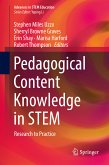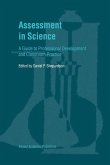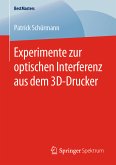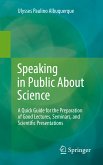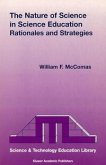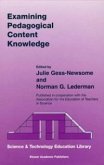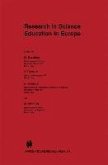L. Viennot
Teaching Physics (eBook, PDF)
73,95 €
73,95 €
inkl. MwSt.
Sofort per Download lieferbar

37 °P sammeln
73,95 €
Als Download kaufen

73,95 €
inkl. MwSt.
Sofort per Download lieferbar

37 °P sammeln
Jetzt verschenken
Alle Infos zum eBook verschenken
73,95 €
inkl. MwSt.
Sofort per Download lieferbar
Alle Infos zum eBook verschenken

37 °P sammeln
L. Viennot
Teaching Physics (eBook, PDF)
- Format: PDF
- Merkliste
- Auf die Merkliste
- Bewerten Bewerten
- Teilen
- Produkt teilen
- Produkterinnerung
- Produkterinnerung

Bitte loggen Sie sich zunächst in Ihr Kundenkonto ein oder registrieren Sie sich bei
bücher.de, um das eBook-Abo tolino select nutzen zu können.
Hier können Sie sich einloggen
Hier können Sie sich einloggen
Sie sind bereits eingeloggt. Klicken Sie auf 2. tolino select Abo, um fortzufahren.

Bitte loggen Sie sich zunächst in Ihr Kundenkonto ein oder registrieren Sie sich bei bücher.de, um das eBook-Abo tolino select nutzen zu können.
This book seeks to narrow the current gap between educational research and classroom practice in the teaching of physics. It makes a detailed analysis of research findings derived from experiments involving pupils, students and teachers in the field. Clear guidelines are laid down for the development and evaluation of sequences, drawing attention to "critical details" of the practice of teaching that may spell success or failure for the project. It is intended for researchers in science teaching, teacher trainers and teachers of physics.
- Geräte: PC
- ohne Kopierschutz
- eBook Hilfe
- Größe: 29.22MB
Andere Kunden interessierten sich auch für
![Pedagogical Content Knowledge in STEM (eBook, PDF) Pedagogical Content Knowledge in STEM (eBook, PDF)]() Pedagogical Content Knowledge in STEM (eBook, PDF)69,95 €
Pedagogical Content Knowledge in STEM (eBook, PDF)69,95 €![Assessment in Science (eBook, PDF) Assessment in Science (eBook, PDF)]() Assessment in Science (eBook, PDF)73,95 €
Assessment in Science (eBook, PDF)73,95 €- -22%11
![Experimente zur optischen Interferenz aus dem 3D-Drucker (eBook, PDF) Experimente zur optischen Interferenz aus dem 3D-Drucker (eBook, PDF)]() Patrick SchürmannExperimente zur optischen Interferenz aus dem 3D-Drucker (eBook, PDF)42,99 €
Patrick SchürmannExperimente zur optischen Interferenz aus dem 3D-Drucker (eBook, PDF)42,99 € ![Speaking in Public About Science (eBook, PDF) Speaking in Public About Science (eBook, PDF)]() Ulysses Paulino AlbuquerqueSpeaking in Public About Science (eBook, PDF)40,95 €
Ulysses Paulino AlbuquerqueSpeaking in Public About Science (eBook, PDF)40,95 €![The Nature of Science in Science Education (eBook, PDF) The Nature of Science in Science Education (eBook, PDF)]() The Nature of Science in Science Education (eBook, PDF)113,95 €
The Nature of Science in Science Education (eBook, PDF)113,95 €![Examining Pedagogical Content Knowledge (eBook, PDF) Examining Pedagogical Content Knowledge (eBook, PDF)]() Examining Pedagogical Content Knowledge (eBook, PDF)113,95 €
Examining Pedagogical Content Knowledge (eBook, PDF)113,95 €![Research in Science Education in Europe (eBook, PDF) Research in Science Education in Europe (eBook, PDF)]() Research in Science Education in Europe (eBook, PDF)113,95 €
Research in Science Education in Europe (eBook, PDF)113,95 €-
-
-
This book seeks to narrow the current gap between educational research and classroom practice in the teaching of physics. It makes a detailed analysis of research findings derived from experiments involving pupils, students and teachers in the field. Clear guidelines are laid down for the development and evaluation of sequences, drawing attention to "critical details" of the practice of teaching that may spell success or failure for the project. It is intended for researchers in science teaching, teacher trainers and teachers of physics.
Dieser Download kann aus rechtlichen Gründen nur mit Rechnungsadresse in A, B, BG, CY, CZ, D, DK, EW, E, FIN, F, GR, HR, H, IRL, I, LT, L, LR, M, NL, PL, P, R, S, SLO, SK ausgeliefert werden.
Produktdetails
- Produktdetails
- Verlag: Springer Netherlands
- Seitenzahl: 235
- Erscheinungstermin: 28. Juni 2011
- Englisch
- ISBN-13: 9789401001212
- Artikelnr.: 43985424
- Verlag: Springer Netherlands
- Seitenzahl: 235
- Erscheinungstermin: 28. Juni 2011
- Englisch
- ISBN-13: 9789401001212
- Artikelnr.: 43985424
- Herstellerkennzeichnung Die Herstellerinformationen sind derzeit nicht verfügbar.
1 / Watersheds.- 1. How and What to Spotlight.- 2. How Much Should be Explained.- 3. Images: Are they always useful?.- 4. Experiments: Are they supposed to help?.- Appendix 1: Some General Intentions Are Very Similar in the Various Syllabuses.- Appendix 2: Why the Pinhole Camera is no Longer on the Syllabus.- 2 / Contact, friction and propulsion.- 1. Laws that Run Counter to Common Sense.- 2. A Method of Spotlighting the Basics.- 3. A Way of Spotlighting Friction: goals and difficulties.- 4. First Elements of Static Friction: step by step.- 5. Analysing the Sequence: lines of attention.- 6. Evaluation of the Sequence with Students.- 7. Reactions of Trainee Teachers.- 8. What Conclusion Should We Draw?.- Appendix 1: The Technique of Fragmented Diagrams.- Appendix 2: Two Situations for Studying Kinetic Friction.- Appendix 3: Trainee Teachers' Comments on the Sequence.- 3 / Pressure in Fluids in the Presence of Gravity.- 1. Questions About the Merits of a Microscopic Approach.- 2. The Macroscopic Level: what quantities "have to be"?.- 3. Fluid Statics: common ideas among students.- 4. A Proposal for the Teaching of Fluid Statics.- 5. Analysing the Sequence: lines of attention.- 6. Evaluation of the Sequence with Students.- 7. Teachers' Reactions.- 8. Conclusion.- Appendix: Main Results of the External Evaluation.- 4 / Superposition of Electric Fields.- 1. Interaction at a Distance and Superposition.- 2. Charges, Fields and Superposition: selected aspects.- 3. Superposition and Causality: common forms of reasoning.- 4. Elements of a Teaching Sequence.- 5. Analysing the Sequence: lines of attention.- 6. Evaluation of the Sequence.- 7. Conclusion.- Appendix 1: Contents Previously Taught to Students Questioned in the Preliminary Survey.- Appendix 2: Electrostatics andElectric Circuits Disconnected: the field in wires.- 5 / Superposition of Waves and Optical Imaging.- 1. Choosing a Model.- 2. Common Difficulties and "Spotlighting" of the Content.- 3. Analysing the Proposal: some elements.- 4. Reactions of In-Service or Trainee Teachers.- 5. Conclusion.- 6 / Colour Phenomena.- 1. A Topic at a Crossroads.- 2. Colour Phenomena and Light: the chosen approach.- 3. Common Ideas: too exclusive a linkage.- 4. A Proposed Sequence.- 5. More Detail, Following the Lines of Attention.- 6. Evaluation of the Sequence.- 7. Teachers' Reactions.- 8. Conclusion.- Appendix 1: Additive and Subtractive Mixing.- Appendix 2: Aspects of Knowledge Whose Acquisition is Evaluated One Year after the Sequence.- Conclusion.- Index of Names.
1 / Watersheds.- 1. How and What to Spotlight.- 2. How Much Should be Explained.- 3. Images: Are they always useful?.- 4. Experiments: Are they supposed to help?.- Appendix 1: Some General Intentions Are Very Similar in the Various Syllabuses.- Appendix 2: Why the Pinhole Camera is no Longer on the Syllabus.- 2 / Contact, friction and propulsion.- 1. Laws that Run Counter to Common Sense.- 2. A Method of Spotlighting the Basics.- 3. A Way of Spotlighting Friction: goals and difficulties.- 4. First Elements of Static Friction: step by step.- 5. Analysing the Sequence: lines of attention.- 6. Evaluation of the Sequence with Students.- 7. Reactions of Trainee Teachers.- 8. What Conclusion Should We Draw?.- Appendix 1: The Technique of Fragmented Diagrams.- Appendix 2: Two Situations for Studying Kinetic Friction.- Appendix 3: Trainee Teachers' Comments on the Sequence.- 3 / Pressure in Fluids in the Presence of Gravity.- 1. Questions About the Merits of a Microscopic Approach.- 2. The Macroscopic Level: what quantities "have to be"?.- 3. Fluid Statics: common ideas among students.- 4. A Proposal for the Teaching of Fluid Statics.- 5. Analysing the Sequence: lines of attention.- 6. Evaluation of the Sequence with Students.- 7. Teachers' Reactions.- 8. Conclusion.- Appendix: Main Results of the External Evaluation.- 4 / Superposition of Electric Fields.- 1. Interaction at a Distance and Superposition.- 2. Charges, Fields and Superposition: selected aspects.- 3. Superposition and Causality: common forms of reasoning.- 4. Elements of a Teaching Sequence.- 5. Analysing the Sequence: lines of attention.- 6. Evaluation of the Sequence.- 7. Conclusion.- Appendix 1: Contents Previously Taught to Students Questioned in the Preliminary Survey.- Appendix 2: Electrostatics andElectric Circuits Disconnected: the field in wires.- 5 / Superposition of Waves and Optical Imaging.- 1. Choosing a Model.- 2. Common Difficulties and "Spotlighting" of the Content.- 3. Analysing the Proposal: some elements.- 4. Reactions of In-Service or Trainee Teachers.- 5. Conclusion.- 6 / Colour Phenomena.- 1. A Topic at a Crossroads.- 2. Colour Phenomena and Light: the chosen approach.- 3. Common Ideas: too exclusive a linkage.- 4. A Proposed Sequence.- 5. More Detail, Following the Lines of Attention.- 6. Evaluation of the Sequence.- 7. Teachers' Reactions.- 8. Conclusion.- Appendix 1: Additive and Subtractive Mixing.- Appendix 2: Aspects of Knowledge Whose Acquisition is Evaluated One Year after the Sequence.- Conclusion.- Index of Names.

